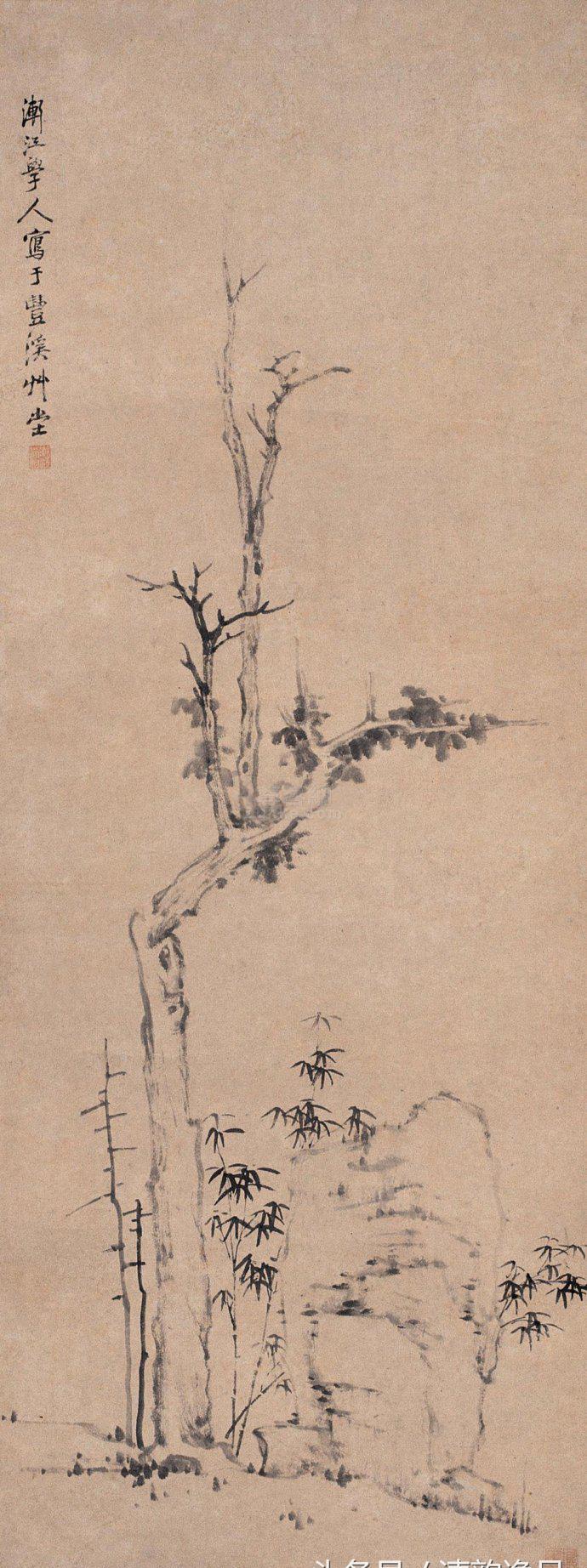
Appreciation of Hirohito's works
Hongren (1610-1664) was originally surnamed Jiang, with the name Tao, the character Liuqi, and later changed his name to Fang, the character Ou Meng. A native of Xin'an (present-day Shexian County, Anhui), he was a young man who was lonely and poor, sexually addicted, and had loved literature since childhood, and his painting life was uninterrupted, and he was born at the end of the Ming Dynasty. When the Qing soldiers entered Huizhou after the fall of the Ming Dynasty, they had the ambition to resist the Qing, participated in the struggle against the Qing And restored the Ming, and then left She for Fujian, where they became monks in Wuyi Mountain, with the legal name Hongren, the character Wuzhi, the number Gradual River, and the name Plum Blossom Guyuan. Studied under the Ancient Navigation Zen Master. After traveling to various places, he returned to She County, lived in the western suburbs of Taiping Xingguo Temple and Wuming Temple, and often traveled between Huangshan and Baiyue. After a few years, he returned to his hometown and devoted himself to the study of painting. This painting only depicts one plum blossom, a few plum blossoms, and the old branches are curved, but it does not affect its expressiveness at all.
He also worked on poetry and loved to write meizhu, but his life was mainly famous for landscapes than at the time, and he belonged to the "Huangshan School" and was the leader of the "Xin'an Painting School". Hongren's personal ideas are closely related to political changes, so they are often revealed in poetry and painting. After becoming a monk, he traveled all over the country and returned to SheXian County, living in the western suburbs of Taiping Xingguo Temple and Wuming Temple, often traveling between Huangshan and Baiyue, and traveling all over the country for more than ten years. The valuable point of his art is that he respects tradition and innovates, and the so-called teacher's method is natural and unique, which is the core of his artistic thought. There was a poem in the past: "Dare to say that heaven and earth are my teachers, and the thousands of cliffs are alone; the dream of a rich spring is good, and there is no section into the fence." "It shows that he is not willing to be confined to the barrier first, and has the courage to change constantly." This kind of artistic realm, except for Shi Tao, is not much among the ancients. Therefore, future generations of original artists have great respect for them.
Hongren was the founder of the "Xin'an School". He, Together with Zha Shibiao, Sun Yi, Wang Lirui and other four people, were known as the "Four Greats of Xin'an" in the early Qing Dynasty, also known as the "Four Greats of Haiyang". Zhang Geng said in the "Records of Paintings of the National Dynasty": "Xin'an painted many Zongqing (Ni Zhan), Gai gradually taught Dao Xianluye," and the history of painting is called Hongren, Jiaquan, ShiTao, and Bada as the "four monks" in the painting world. Represents the innovative faction. In the thirteenth year of Ming Shunzhi (1656), he returned from Min to She, to Xigan Wuming Temple. The painting started from the Song and Yuan dynasties, and Wan Chongni's painting method was the founder of the Xin'an School of painting. Painter of the ancients. More teachers. After returning to She, he must visit Huangshan Mountain every year, taking "Jiangnan True Landscape as a Manuscript", and has made 50 real scenes of Huangshan Mountain, and his pen and ink are vigorous and clean. Rich in elegance, giving people a sense of freshness. His "Huangshan Pine Stone Map" is also very handsome and does not fall into the stereotype. The "Xiaojiang Wind Map" wrote about the scenery of Pukou, pen and ink He Jin, and used both flanking, which is a representative work of his later years. In addition to landscapes, plum blossoms and double-hooked bamboo are also written, and together with Shibiao, Sun Yi, and Wang Zhirui, they are called "Xin'an Four Greats" (also known as "Haiyang Four Houses"). Yan Zhenqing of calligraphy, Ni Yunlin of Calligraphy, Shen Yun of Yi, and gong poems, were compiled by posterity into 148 paintings.